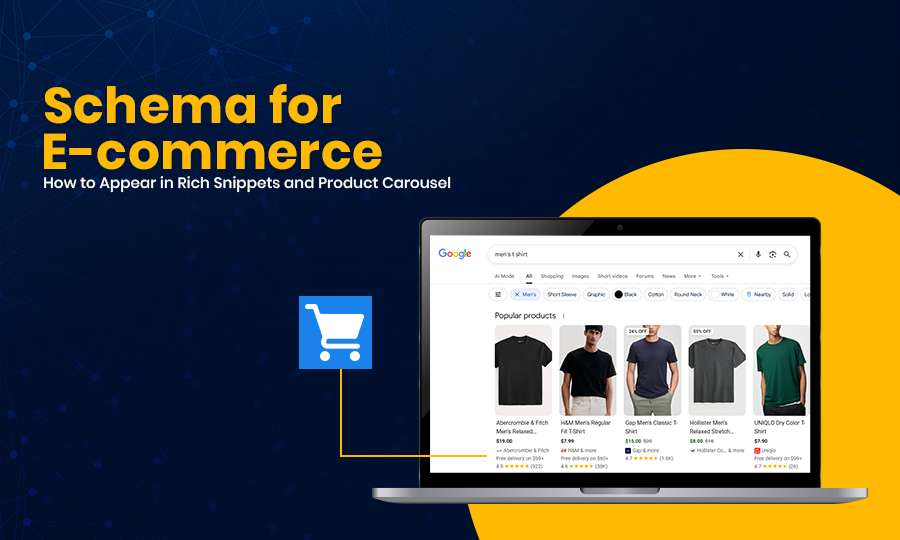Appearing in search engine results pages (SERP) and maintaining a consistent position is crucial in today’s competitive e-commerce business world. You can easily come across a number of online retailers struggling with lower visibility and thus get deprived of appearing in rich snippets and product carousels. Here, the schema for e-commerce comes as a solution to overcome any such situation.
According to a survey, approximately 72.6% of pages that rank on top in Google utilize schema markup. It clearly envisages the significance of maximizing search ranking and visibility of structure data. So, now the question is, how can you make your e-commerce website high-performing in terms of its ranking in the search results page? The answer is implementing schema markup.
The process of implementing e-commerce schema markup involves using code to produce pages. Doing this allows you to help search engines understand detailed information regarding physical products, reviews, product availability, etc. It improves the visibility of your e-commerce website while maximizing the appearance in rich snippets and product carousels. These finally boost organic traffic, conversions, and ROI.
What is Schema Markup?
Also popular as structured data, schema markup gives search engines all the information regarding your website that it has. It enables search engines to understand the type of content your website includes. You need to understand that search engines read any regular website content as plain text.
But schema markup organizes content perfectly to allow machines to interpret it conveniently. For any e-commerce website, it reflects offering vital information regarding reviews, prices, availability, and more directly to search engines.
You need to know that Schema.org is a collaborative initiative through some leading search engines, such as Bing, Google, Yahoo, and many others. They provide a highly standardized vocabulary to add structured data to several web pages.
With the use of e-commerce schema markup, you can make it convenient for search engines to produce rich results, including pricing, star ratings, product availability, and more. These improve your website’s visibility in search engines. It thus maximizes the visibility of your website in search engines as well.
Why is Schema Important for Search Engines?
Search engines leverage schema for a variety of purposes that are as follows;
- Understand the actual type and purpose of content your website includes
- Provide improved search outcomes, such as carousels and rich snippets.
- Provide additional information to users by increasing click-through rates.
What are Some Common Formats of Schema?
The common formats of schema include JSON-LD, Microdata, and RDFa. Let’s explore them with the following details;
| Format | Description | Use Case |
| JSON-LD | It’s based on JavaScript and recommended by none other than Google. It’s one of the easiest and most preferred formats | Its popular use cases include blogs, e-commerce, events, |
| Microdata | It’s an inline HTML attributes | Its use cases include older websites |
| RDFa | It embeds metadata in HTML | Its popular use cases include complex content relationships |
What are the Top Benefits of Schema Markup for E-commerce?
When you implement schema markup on your e-commerce websites, it provides a plethora of benefits. These benefits have a direct impact on everything, be it traffic, visibility, or user engagement. Let’s discuss some of the top advantages;
- Boost Product Visibility on SERP
Schema markup allows rich snippets and thus lets you appear with enhanced search results with prices, ratings, images, and stock keeping units. The maximized visibility ensures a merchant listing experience and helps it to stand out more, especially when compared to standard search outcomes, which maximize the overall chance of enticing potential buyers.
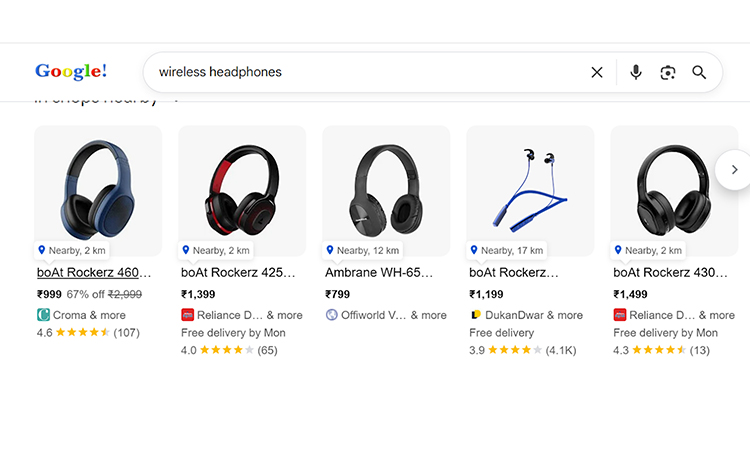
- Increase Click-Through Rate (CTR)
With e-commerce schema markup, users can click based on your product links over your competitors’ by reflecting additional information related to ratings, reviews, and promotions.
According to research, pages that have a rich snippet can easily experience an improved CTR up to 30%. These make structured data a robust tool to increase organic traffic and conversions.
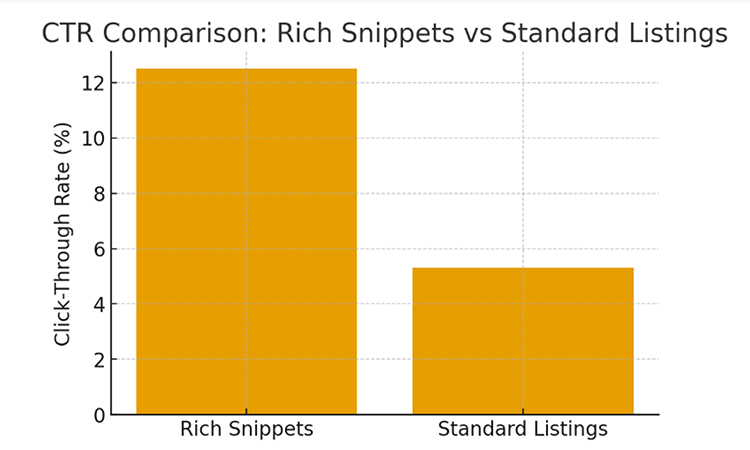
- Supports Voice Search and Google Shopping
As per research, approximately 71% of users opt for voice search rather than typing while searching for anything online. You need to be aware of the fact that voice search relies extensively on structured data to offer direct answers. Your products tend to appear more in voice queries with the use of e-commerce schema.
In the same way, Google Shopping uses structured data to highlight product details with higher accuracy, which makes schema necessary for online retailers seeking to reach shoppers across a range of platforms.
- Get a Better Understanding of Product Pages
With schema, search engines get complete information regarding products, be it SKU, brand, offers, or category. Data helps Google to understand your e-commerce site better, which results in improved SERP features and also an overall contextual relevance.
- Enables Better Indexing
When it comes to structured data, it allows search engines to crawl and index product pages with higher accuracy and efficiency. A web page having schemas has less chance of misinterpretation or being overlooked. It’s indeed highly important for a large e-commerce store with the number of products.
What are the Different Types of Schema Markup for E-commerce Sites?
There are different types of schema markups for searching specific purposes. We explain below some of the top schema markups used most commonly. Let’s explore more about the schema type.
- Product Schema
When it comes to product schema markup, it’s considered to be fundamental for any e-commerce website. It provides search engines with important details related to the product, including description, name, brand, images, category, and more.
When you implement product schema markup, it ensures your products have the potential to be rich snippets. These display images, ratings, and important features directly in Google search results.
Benefits
- Improved product listings in search outcomes
- Improved user engagement and reliability
- Eligibility for product carousels and rich snippets
Example JSON-LD:
{
“@context”: “https://schema.org/”,
“@type”: “Product”,
“name”: “Wireless Headphones”,
“image”: “https://example.com/images/headphones.jpg”,
“description”: “High-quality wireless headphones with noise-cancellation.”,
“sku”: “WH-12345”,
“brand”: {
“@type”: “Brand”,
“name”: “SoundMagic”
}
}
- Offer Schema
When it comes to “Offer schema”, it’s used mainly to provide details related to currency, product’s price, availability, special offers, and more. This schema is combined with the product schema to communicate real-time pricing and also sales data for search engines, and more.
Benefits:
- Display discounts or sales
- Maximize click-through rates with updated offers
- Highlight accurate pricing in search outcomes
Example JSON-LD:
{
“@context”: “https://schema.org/”,
“@type”: “Offer”,
“priceCurrency”: “USD”,
“price”: “99.99”,
“availability”: “https://schema.org/InStock”,
“url”: “https://example.com/wireless-headphones”
}
- Review and Rating Schema
Review schema primarily displays customer reviews and ratings directly on search results. Rating/aggregate schema can summarize numerous reviews to highlight a complete rating for products as well.
Benefits:
- Review schema maximizes CTR with the help of visually appealing star ratings.
- It develops reliability by displaying verified customer feedback.
- Maximize more purchases with the help of social proof.
Example JSON-LD:
{
“@context”: “https://schema.org/”,
“@type”: “Review”,
“author”: “Jane Doe”,
“datePublished”: “2025-09-25”,
“reviewBody”: “Excellent sound quality and battery life.”,
“reviewRating”: {
“@type”: “Rating”,
“ratingValue”: “5”,
“bestRating”: “5”
}
}
- Organization Schema
The organization schema offers complete details related to the business itself. It includes several things like website, name, logo, social media profiles, and more. For a large number of e-commerce websites, it helps establish brand identity in search outcomes.
Benefits:
- It boosts brand credibility.
- It highlights company information in knowledge panels.
- It ensures search engines are related to products with your brand.
Example JSON-LD:
{
“@context”: “https://schema.org”,
“@type”: “Organization”,
“name”: “TechGear Store”,
“url”: “https://techgearstore.com”,
“logo”: “https://techgearstore.com/logo.png”,
“sameAs”: [
“https://www.facebook.com/techgearstore”,
“https://www.instagram.com/techgearstore”
]
}
- Breadcrumb Schema
By using breadcrumb schema, search engines can easily understand the overall structure of your website. It reflects a complete hierarchical navigation path.
Home> Category> Subcategory> Product
Benefits:
- It boosts site navigation in search outcomes.
- It improves internal linking and indexing.
- It allows users to understand the product’s physical locations in the store.
Example JSON-LD:
{
“@context”: “https://schema.org”,
“@type”: “BreadcrumbList”,
“itemListElement”: [{
“@type”: “ListItem”,
“position”: 1,
“name”: “Home”,
“item”: “https://techgearstore.com”
},{
“@type”: “ListItem”,
“position”: 2,
“name”: “Headphones”,
“item”: “https://techgearstore.com/headphones”
}]
}
- FAQ Schema
The FAQ schema highlights frequently asked questions (FAQs) and answers, which are directly in search outcomes, improving visibility. It’s useful for those pages that include FAQs. Every question and answer appears as a rich snippet in search outcomes.
Benefits:
- It minimizes bounce rate by offering relevant information upfront.
- It offers fast answers in SERPs
- It boosts visibility for common customer queries.
Example JSON-LD:
{
“@context”: “https://schema.org”,
“@type”: “FAQPage”,
“mainEntity”: [{
“@type”: “Question”,
“name”: “Do these headphones support Bluetooth 5.0?”,
“acceptedAnswer”: {
“@type”: “Answer”,
“text”: “Yes, they support Bluetooth 5.0 and can connect to multiple devices.”
}
}]
}
- Shipping and Returns Schema
This schema offers completely structured shipping information, including costs, return policies, and methods. It communicates delivery times, shipping options, return policies, and more. It’s increasingly relevant for many online retailers since customers consider logistics an important purchasing factor.
Benefits:
- It develops reliability by displaying return and shipping details.
- It boosts user experience.
- It tends to boost conversion rates by minimizing purchase hesitation.
Example JSON-LD:
{
“@context”: “https://schema.org”,
“@type”: “Product”,
“name”: “Wireless Headphones”,
“offers”: {
“@type”: “Offer”,
“shippingDetails”: {
“@type”: “OfferShippingDetails”,
“shippingRate”: {
“@type”: “MonetaryAmount”,
“value”: “5.99”,
“currency”: “USD”
},
“shippingDestination”: {
“@type”: “DefinedRegion”,
“addressCountry”: “US”
}
},
“returnPolicy”: {
“@type”: “MerchantReturnPolicy”,
“returnPolicyCategory”: “https://schema.org/MerchantReturnFiniteReturnWindow”,
“returnFees”: “https://schema.org/FreeReturn”
}
}
}
- Price Schema
When it comes to the price schema, it highlights the overall cost of the product, including discounts. It’s embedded with ‘Offer schema”. Price schema displays product prices, which is indeed helpful for search engines to display pricing in rich snippets with higher accuracy. It can be used to reflect discounts, sale prices, regular pricing, and more.
Benefits:
- It attracts those shoppers who are budget-conscious
- It ensures an accurate price display to maximize clicks.
- It mainly supports dynamic pricing updates.
Example JSON-LD:
{
“@context”: “https://schema.org/”,
“@type”: “Product”,
“name”: “Wireless Earbuds”,
“image”: “https://example.com/images/earbuds.jpg”,
“description”: “High-quality wireless earbuds with noise cancellation.”,
“sku”: “12345”,
“brand”: {
“@type”: “Brand”,
“name”: “SoundPro”
},
“offers”: {
“@type”: “Offer”,
“url”: “https://example.com/product/wireless-earbuds”,
“priceCurrency”: “USD”,
“price”: “59.99”,
“priceValidUntil”: “2025-12-31”,
“availability”: “https://schema.org/InStock”,
“itemCondition”: “https://schema.org/NewCondition”
}
}
- Availability Schema
As the name suggests, this schema suggests whether the product is available out of stock or in stock. It thus helps better when it comes to managing user expectations. These details are crucial for everyone, whether it’s search engines or shoppers.
Benefits:
- It minimizes customer frustration by reflecting stock status upfront.
- It improves both trust and transparency.
- It supports real-time inventory updates in search outcomes.
Example JSON-LD:
{
“@type”: “Product”,
“name”: “Wireless Earbuds”,
“offers”: {
“@type”: “Offer”,
“availability”: “https://schema.org/InStock”
}
}
- Local Business Schema
Local Business schema matters the most, especially for e-commerce businesses that have a physical store. It provides important details such as the name of the store, address, telephone number, opening hours, and more.
Benefits:
- It improves local SEO performance.
- It boosts foot traffic to any physical stores with online visibility.
- It ensures appearance in local search outcomes and Google Maps.
Example JSON-LD:
{
“@context”: “https://schema.org”,
“@type”: “Store”,
“name”: “TechGear Store Downtown”,
“image”: “https://techgearstore.com/store.jpg”,
“address”: {
“@type”: “PostalAddress”,
“streetAddress”: “123 Main St”,
“addressLocality”: “New York”,
“postalCode”: “10001”,
“addressCountry”: “US”
},
“telephone”: “+1-123-456-7890”,
“openingHours”: “Mo-Sa 09:00-18:00”
}
How to Add Schema Markup to Your E-commerce Site
Well, the process of implementation of e-commerce schema markup is something that seems to be technical. But you can indeed manage it better with the right approach. JSON-LD got a huge recommendation from Google to be implemented easily.
The main reason why Google recommends JSON-LD is that it’s highly flexible, clear, and doesn’t have any interference with the HTML of your website. It’s best to be within the <script type=” application/1d+jason”> tag inside the <head> section of your webpage.
Let’s understand the actual example of schema implementation (product implementation)
<script type=”application/ld+json”>
{
“@context”: “https://schema.org/”,
“@type”: “Product”,
“name”: “Running Shoes”,
“image”: “https://example.com/shoe.jpg”,
“description”: “Lightweight running shoes for daily training.”,
“sku”: “12345”,
“brand”: { “@type”: “Brand”, “name”: “SportyFit” }
}
</script>
Offer Schema Example:
<script type=”application/ld+json”>
{
“@context”: “https://schema.org/”,
“@type”: “Offer”,
“priceCurrency”: “USD”,
“price”: “89.99”,
“availability”: “https://schema.org/InStock”,
“url”: “https://example.com/product/shoe”
}
</script>
Step-by-Step Guide to Add Schema
Let’s discuss different steps to add schema markup to your e-commerce website.
- Choose the Required Property
You need to first determine the necessary properties for every product, be it Google images, name, price, description, brand, availability, or reviews.
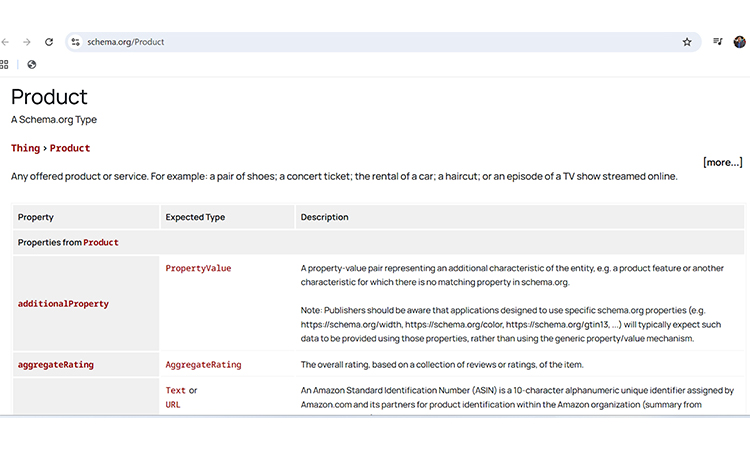
- Gather Data
You need to gather data for the selected properties from the product database.
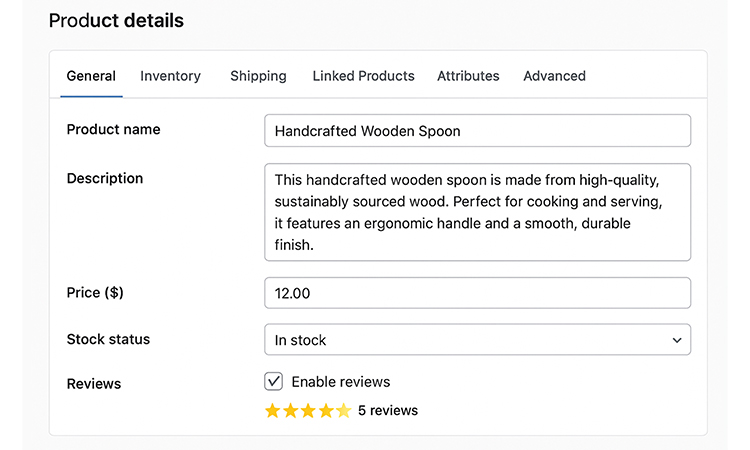
- Generate JSON-LD
- You can do it manually when you are capable of writing code comfortably and thus can craft a JSON-LD script on your own.
- If you are looking to generate the script through code, you can leverage several tools, such as JSON-LD Playground or Google’s Structured Data Markup.
- You can also use e-commerce platform plugins for WordPress to produce a basic product schema. These plugins include Yoast SEO, Rank Math, etc..
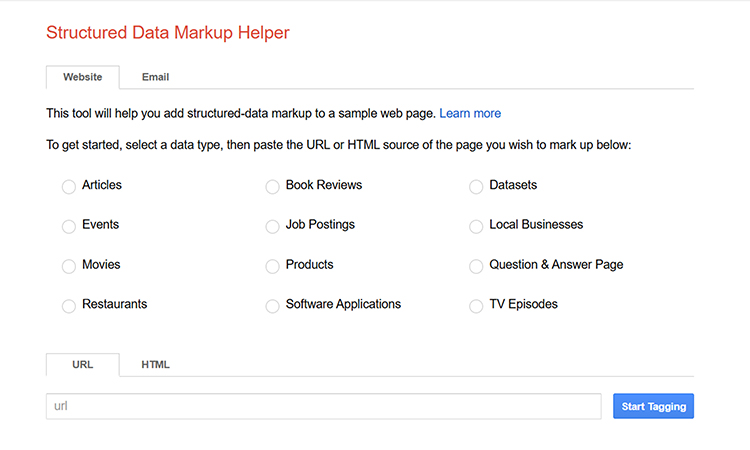
In the above image, you need to select the exact category of your site and then provide a URL to generate a script.
- Add to Your Page
Once you generate the JSON-LD script, it’s time to place the script within the <head>section of your product page HTML. For a single-product page, every page has its unique product schema.
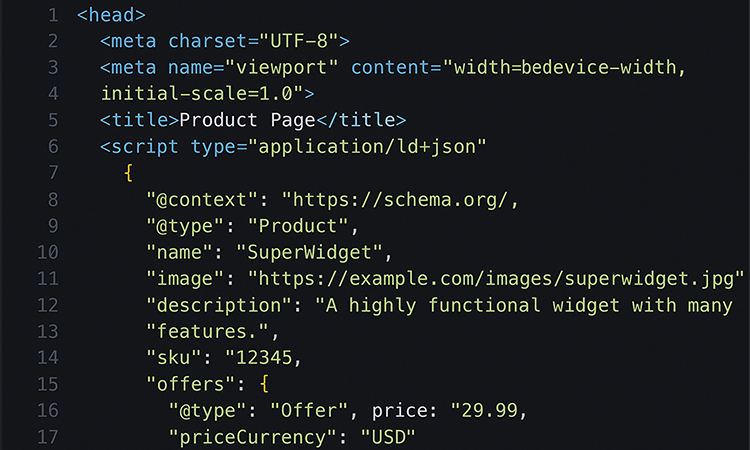
- Test Schema
It’s indeed highly crucial, and you should never forget to perform it to know whether your schema markup works properly or not.
How to Test and Validate Your Schema?
- You need to use Google’s rich results test. It works effectively when it comes to verifying which is eligible for every snippet. It’s advisable for your page URL or a code snippet. And it reflects supported rich outcomes (review, product, etc.) with any warnings or errors.
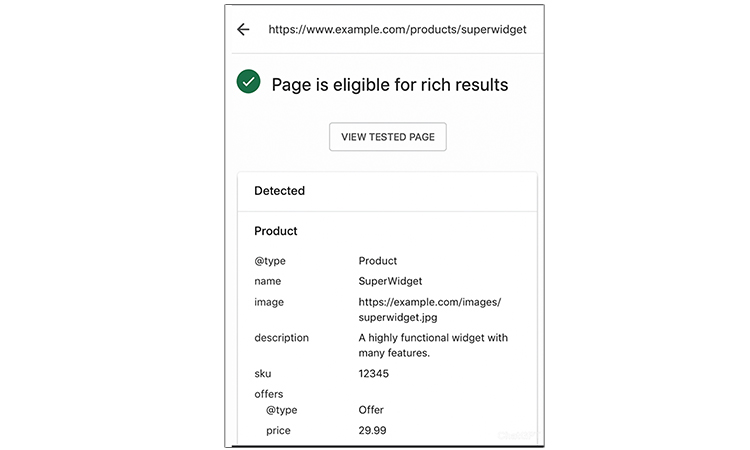
- Use of Schema Markup Validator (schema.org): You need to take into account that the Schema Markup Validator is used to test whether Microdata or JSON-LD follows schema.org standards. It’s indeed useful to validate non-Google-specific markup. It ensures your structured data is technically appropriate.
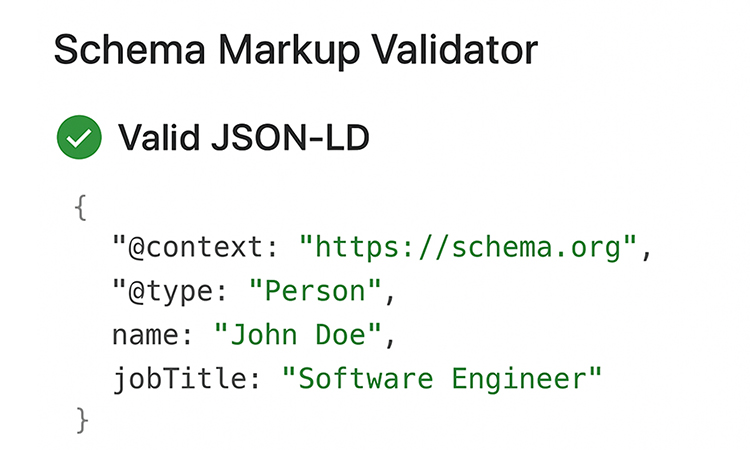
- Use the Enhancement Report of Google Search Console: Once you make your schema live, you need to analyze it with the help of Google Search Console under the Enhancements section. It offers a complete insight into coverage, detected schema types, and any issues Google faces. It’s advisable to resolve errors that are useful to maintain eligibility for reach outcomes.
Schema Markup for Product Variants
E-commerce websites sell a large number of products in different colors, sizes, models, and others. When you markup these variants in a proper way with schema, it ensures search engines highlight product details, including availability, price, and attributes, with higher accuracy.
- Handling Sizes, Colors, and Models
Rather than duplicating content for every variant, you can utilize schema properties, including size, color, or SKU, to display the actual differences. Every variant includes its own Offer details, be it price, availability, or stock.
- Single Product vs Variant-Rich Products
For a single product, it’s advisable to define one Product schema with a particular Offer. But, for a large number of variant-rich products, Google always recommends the use of a parent-child structure. For instance, t-shirts in different sizes and colors. It reflects marking up a parent product and also linking child variants with their particular details.
What does Google recommend?
Google advises the following important things;
- Use just a single Product markup per product page.
- It’s important to include distinct Offers within the Product markup to gather variant-level details, including size, color, and price.
- You need to always ignore creating a large number of Product markups for every variant on the same page. It creates confusion for crawlers.
Common Mistakes to Avoid
The fact can’t be denied that schema markup can improve the visibility and performance of your e-commerce website. But you will be deprived of availing these benefits without a proper implementation. We will discuss some of the common mistakes you are supposed to avoid.
- Marking Up Products That are Not for Sale
The biggest mistake that the majority of e-commerce businesses commit is that they often implement the Offer schema for those products that are not available. You need to understand that search engines may avoid marking those pages or even penalize them.
Solutions: You need to include only those products that are available for sale for schema markup.
- Inconsistent or Missing Required Fields
You need to understand the fact that schema markup relies extensively on particular fields such as availability, price, name, and SKU for products. When you omit or avoid providing consistent data, it minimizes the appearance of rich snippets and also causes errors in Google’s Rich Results Test.
Solution: You are suggested to double-check all necessary fields to ensure they are filled and updated properly.
- Fake or Inflated Ratings/Reviews
Whether it’s inflating ratings or fabricated reviews, they are indeed tempted. But they can also harm your website. They can negatively impact the reliability of your website and also cause penalties. Always keep in mind that search engines prioritize authenticity.
Solution: You need to mark up only real customer reviews and ratings rather than fake ones. These indeed help you in maintaining both credibility and compliance.
- Mixing JSON-LD and Microdata improperly
When you use a large number of schema formats on the same page, even without proper coordination, it can be confusing for search engines. For instance, while combining JSON-LD and Microdata improperly, you may come across certain indexing errors in rich snippet displays.
Solution: You need to make a selection of the right format based on the content type. JSON-LD is perfect for e-commerce.
Advanced Tips and Use Cases
Implementing a rock-solid strategy is a better way to make your e-commerce site stand out even in search outcomes. Let’s explore some of the most useful tips and use cases.
- Add Schema Image to Boost Product Visuals in Carousel
You can make your listing visible in Google’s product carousels, along with thumbnails, by implementing top-quality product images within your Product schema (image property). It makes your products compelling while increasing click-through rates.
- Use Video Schema for Product Demonstration
Adding the Video Object schema ensures their appearance in search outcomes with a video-rich snippet, whether you have explainer videos or product demos. This is indeed quite robust for unboxing experiences, displaying product features, tutorials, or other content that boost purchase intent.
- Use Local Business Schema
It’s important to understand that adding the Local Business schema boosts overall visibility in both map results and local search for e-commerce brands with physical stores. When you include important details such as location, business hours, contact information, etc., it helps your nearby potential customers easily find your store.
E-commerce Platforms and Schema Integration
Adding structured data to any e-commerce website relies extensively on the platforms you leverage. A large number of platforms offer third-party extensions or built-in support, which make it convenient to produce rich snippets for reviews, products, and offers.
- Shopify
Shopify comes with basic schema markup by default, including price, product, availability, and more. Meanwhile, for modern schema types, including HowTo, FAQ, or Review, you may need various apps like JSON-LD for search engine optimization (SEO) or Smart SEO. These apps are capable of automating markup insertion and also ensuring full compatibility with Google’s rich outcomes.
- WooCommerce
Developed in WordPress, WooCommerce depends heavily on plugins for schema. It comes with a large number of famous SEO plugins, such as Rank Math, Yoast SEO, and more. These provide a schema for breadcrumbs, products, reviews, FAQs, and more. Apart from this, you can also integrate a custom schema with the use of a schema generator or through editing theme files.
- Magento
Magento supports better with the help of extensions available on its marketplace. Apart from tools like Mageworx SEO Suite or Amasty SEO Toolkit, which offer a comprehensive schema integration for reviews, product catalogs, category pages, and more. This is specifically useful for a number of stores with complicated product hierarchies.
- BigCommerce
BigCommerce is available with a fully structured data markup developed for important product details. For more needs, you get an option to extend the schema with the help of third-party integration or theme customization.
Other Platforms
Apart from these platforms, many platforms, such as Wix and Squarespace, include basic schema support. To get better control, developers get an option to integrate custom JSON-LD snippets into templates.
Real-World Examples
A large number of popular brands have implemented schema and availed numerous benefits. Now, we will take some real-world examples of schemas for e-commerce to understand everything better.
Example 1: Amazon
Being one of the most sought-after e-commerce brands, Amazon leverages the potential advantages of schema markup. A large number of Amazon product pages utilize extensive schema markup for Offer, Product, Review, and more.
When you look for “Amazon Echo Dot” in Google, you often see pricing, ratings, availability, and more directly in search snippets. It helps users make quick decisions and propel click-through rates.
Example 2: Walmart
Walmart is another popular e-commerce brand that leverages schema to display availability, review stars, price, and more in Google search results. Their immense rise of structured data allows customers to get the necessary purchasing details before even clicking through.
Before and After Example
Before Schema: It reflects a simple text link with a meta description: “Men’s Running Shoes – Lightweight shoes for daily wear.”

After Schema: Rich snippet reflects the following important things;

- 4.5 ratings (2300 reviews)
- Availability: In Stock
- Price: $89.99
- Product Image Thumbnail
The above details reflect how schema improves both reliability and visibility.
Conclusion
For a large number of e-commerce websites, schema markup is indeed worth implementing. It boosts how search engines interpret and also highlights your content, which leads to rich search snippets, maximizes visibility, and displays your content and click-through rates. Schema markup tends to become a robust tool for maximizing traffic when paired with high-quality and optimized content. It maximizes engagement and conversions. Get in touch with a professional ecommerce SEO company to implement schema markup to your e-commerce store and avail of numerous potential benefits.

